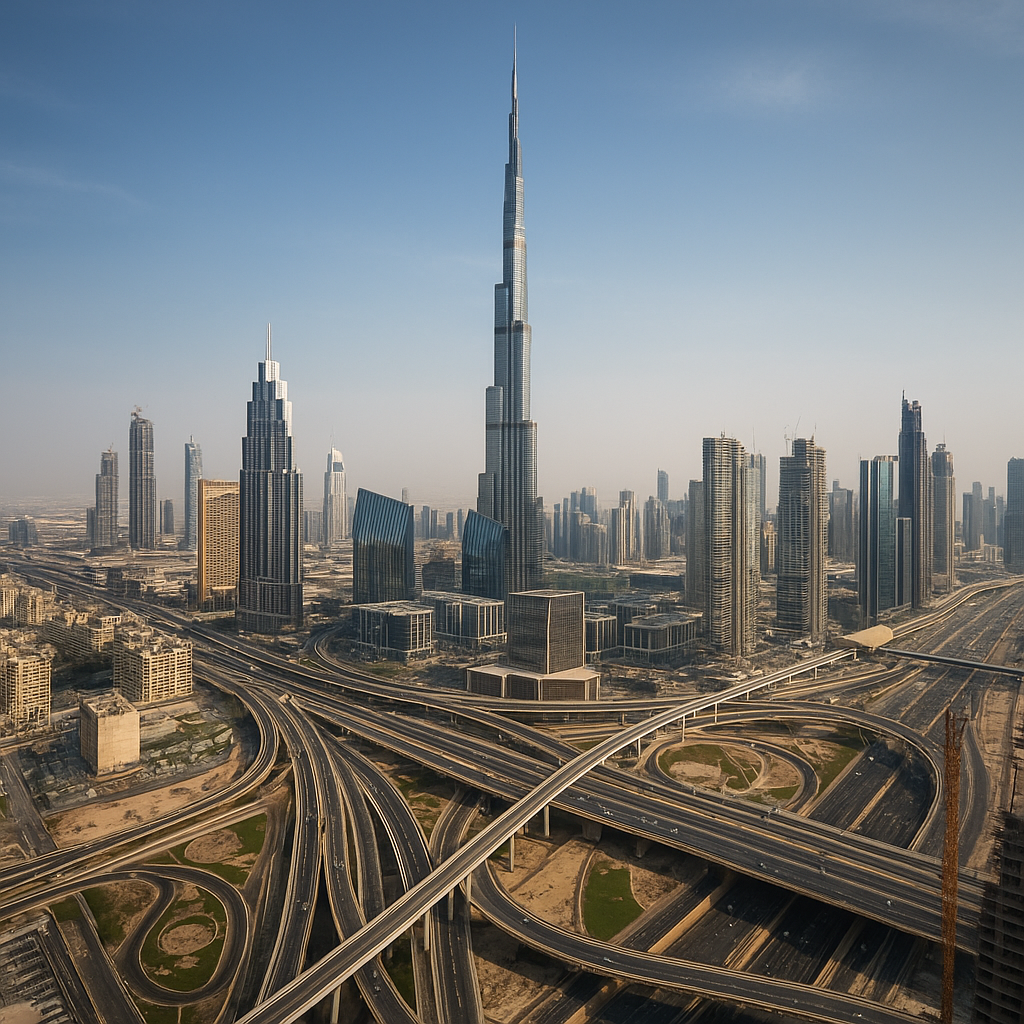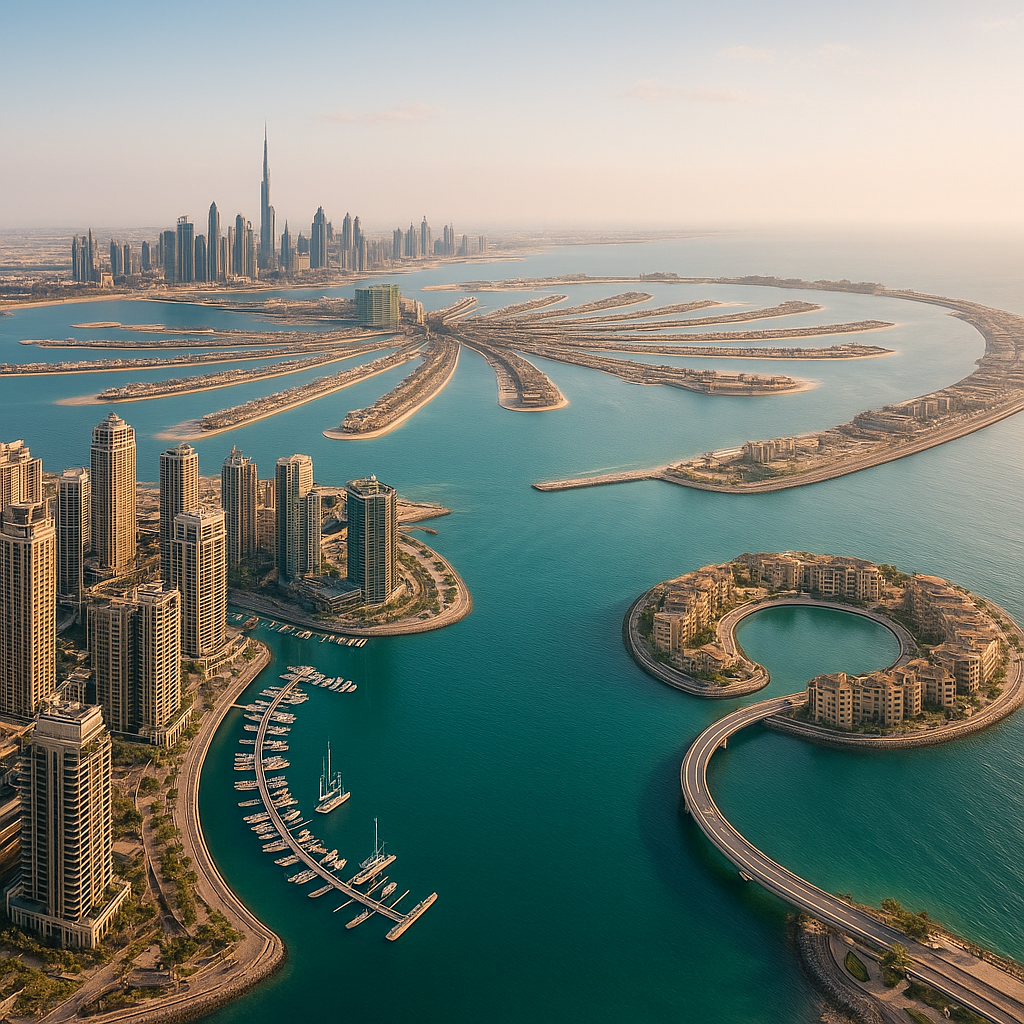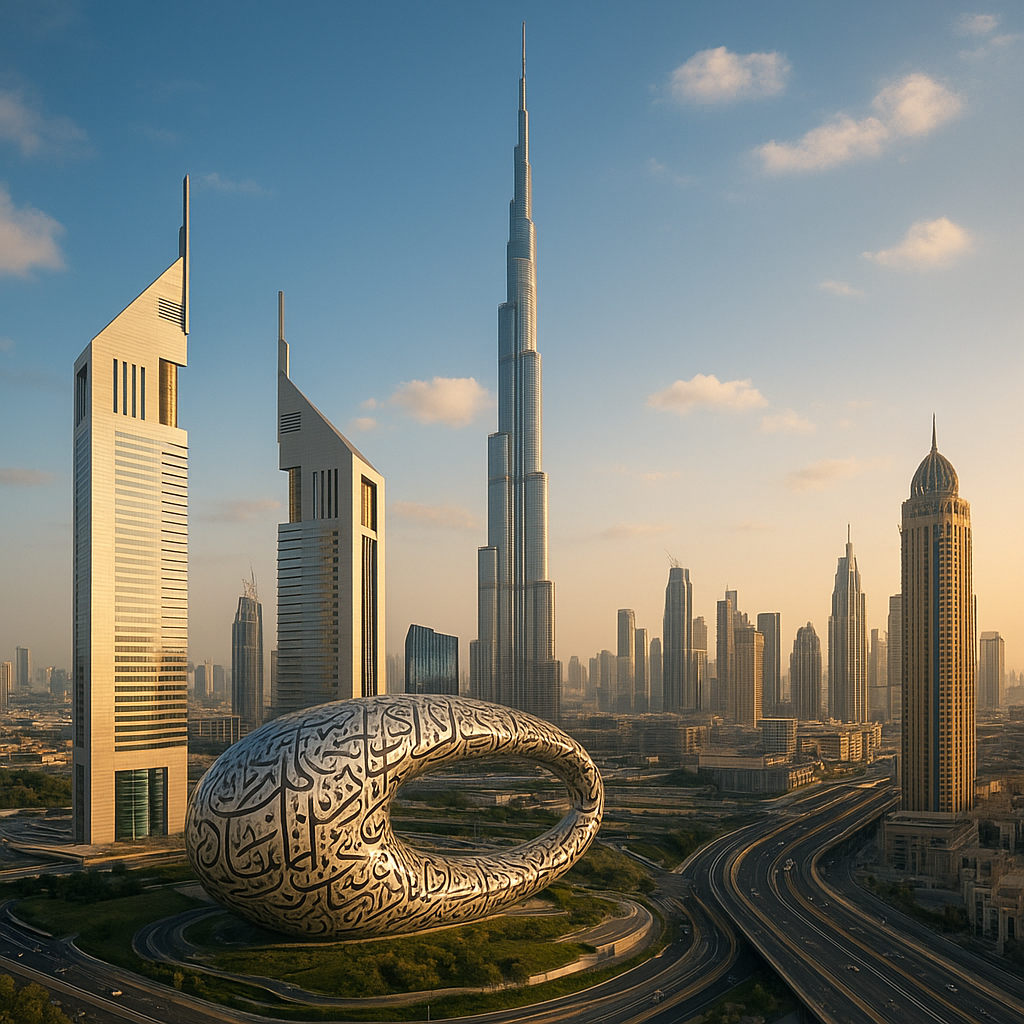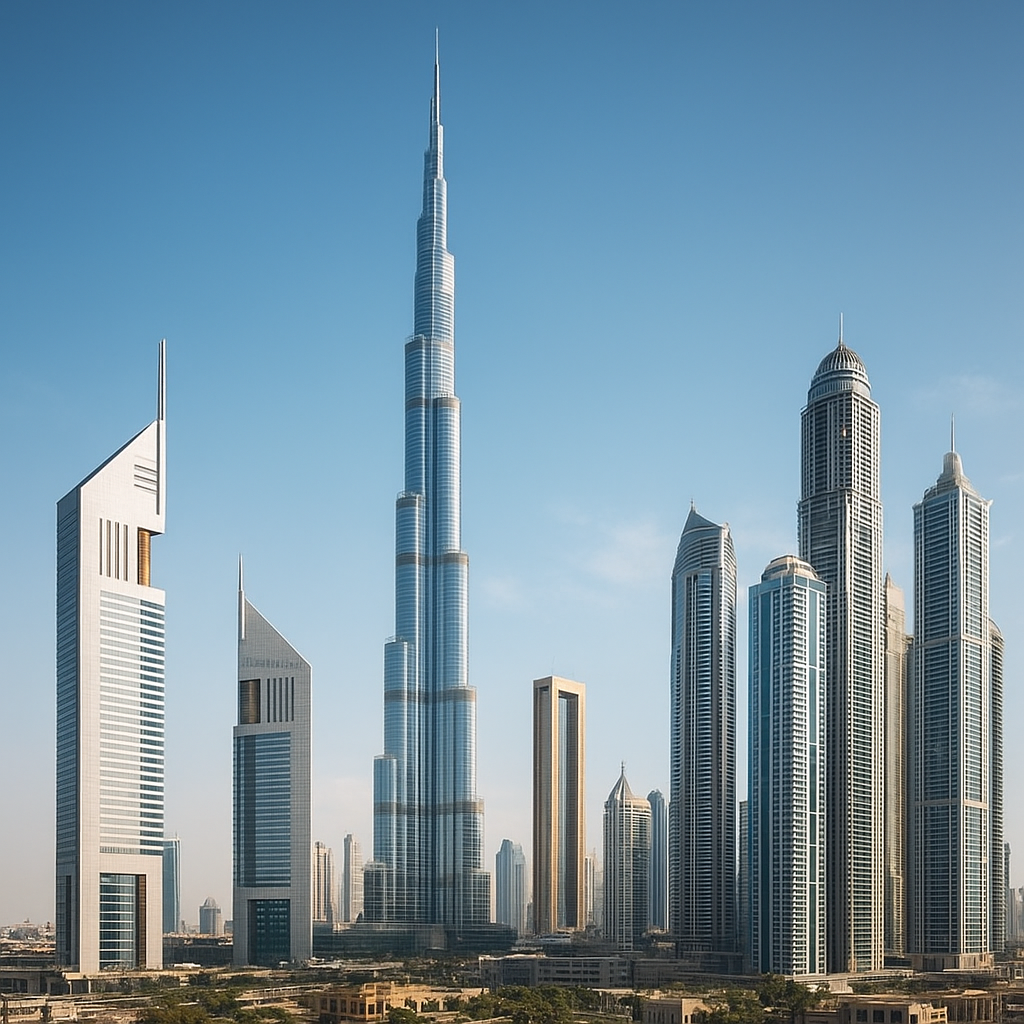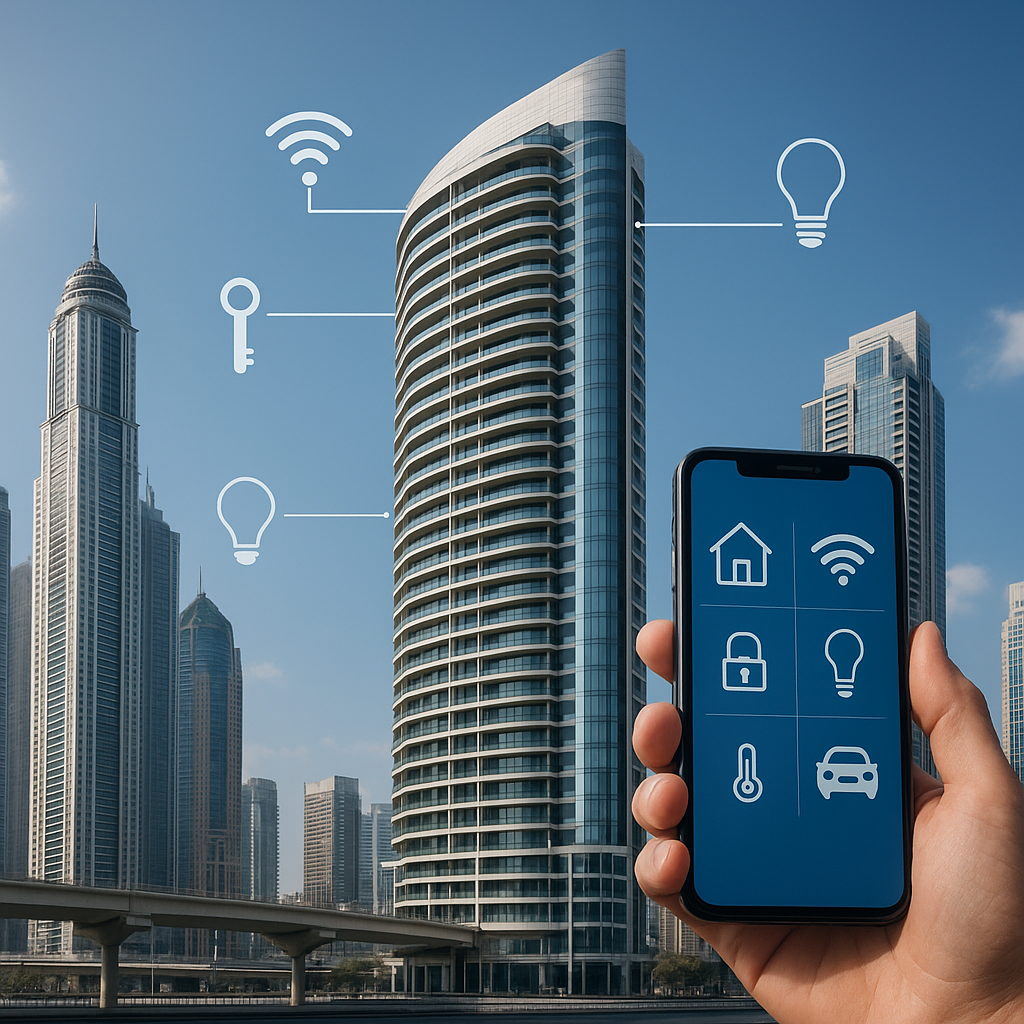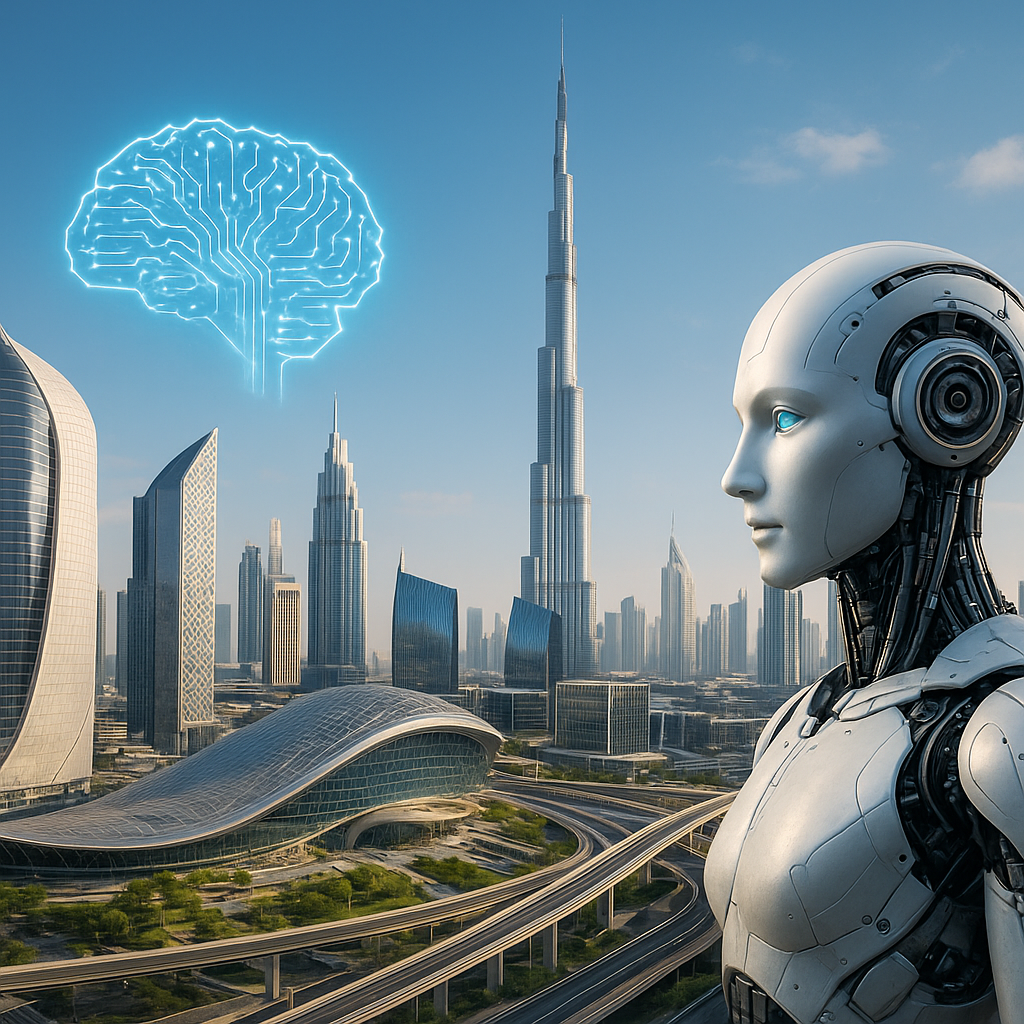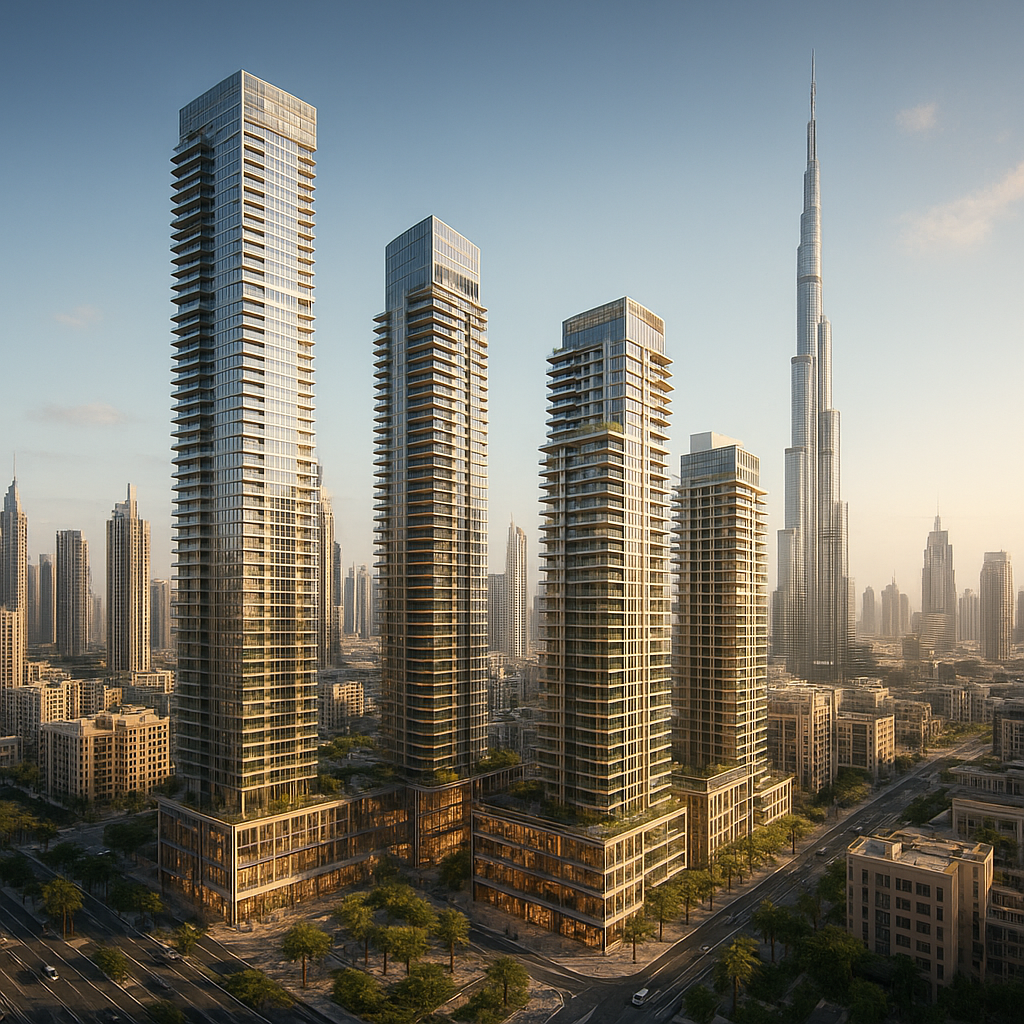The skyline of Dubai stands as a testament to human ambition and the power of innovation. From empty desert sands to a glittering metropolis adorned with record-breaking structures, the city has become synonymous with skyscrapers and architectural extravagance. Exploring the story behind this transformation reveals an interplay of bold investment decisions, cutting-edge engineering solutions, and a vision to redefine what a modern city can be.
Rise of Modern Dubai Skyline
In the latter part of the 20th century, Dubai shifted its focus from an oil-based economy to diversified sectors like real estate, tourism, and infrastructure. Key milestones include:
- 1979: Completion of the Dubai World Trade Centre, the country’s first high-rise.
- 1999: Launch of the Sheik Zayed Road development plan, paving the way for clustered skyscrapers.
- 2004: Construction begins on the Palm Jumeirah, showcasing Dubai’s ambition to sculpt land itself.
- 2004: Groundbreaking of Burj Khalifa, which would eclipse all existing height records.
This era saw a relentless transformation of the skyline. Developers competed to break height records, resulting in a vertical race that propelled Dubai to the forefront of global attention. The city’s leadership granted incentives to encourage private investment in large-scale projects, reinforcing a culture of architectural daring.
Architectural Marvels and Innovations
Burj Khalifa: A Symbol of Ambition
The Burj Khalifa, soaring to a staggering height of 828 meters, embodies Dubai’s quest for world records. Key features include:
- A bundled tube structural system enabling unprecedented height.
- High-performance concrete engineered to withstand extreme summer temperatures.
- Energy-saving designs, such as a condensate recovery system providing water for landscaping.
This tower redefined what was possible, setting a new benchmark for both engineering prowess and luxury living in a vertical city.
Innovative Mixed-Use Developments
Beyond pure height contests, Dubai excelled at creating integrated communities where residents live, work, and play. Notable projects:
- Downtown Dubai: A pedestrian-friendly district encompassing the Burj Khalifa, the Dubai Mall, and a vast network of promenades.
- Dubai Marina: A waterfront enclave featuring residential towers, hotels, marinas, and retail outlets—all designed around a sparkling canal.
- Business Bay: A central business district that promotes corporate headquarters alongside luxury apartments, encouraging a 24/7 urban rhythm.
These developments showcase Dubai’s capacity to blend architecture with urban planning, emphasizing walkability, amenities, and accessibility.
Sustainable Future and Urban Planning
As Dubai’s skyline matured, attention shifted toward environmental impact and long-term sustainability. Emerging initiatives include:
Green Building Standards
The Dubai Electricity and Water Authority introduced the Green Building Regulations mandating energy-efficient designs. Projects now prioritize:
- Solar shading and high-performance glazing to reduce cooling loads.
- Water-saving fixtures and greywater recycling systems.
- Use of recycled building materials and locally sourced components.
Smart City Technologies
Incorporating digital infrastructure into building management helps optimize resource consumption. Smart features include:
- IoT-enabled sensors adjusting lighting and HVAC settings in real time.
- Automated waste collection systems improving hygiene and reducing carbon footprint.
- Integrated public transport apps linking skyscraper tenants to metro lines and electric buses.
These advancements demonstrate a commitment to mitigating the environmental footprint of high-density developments.
Economic and Cultural Impacts
The proliferation of iconic skyline landmarks has boosted Dubai’s stature as a global hub for business and tourism. Key effects include:
- Tourism Surge: Visitors flock to experience the world’s tallest observation deck and luxury hotels in airborne towers.
- Business Attraction: Multinational corporations establish regional headquarters, capitalizing on state-of-the-art office spaces and favorable tax regimes.
- Cultural Exchange: Dubai’s skyscrapers house art galleries, performance venues, and event spaces that foster international cultural dialogue.
By aligning commercial interests with cultural programming, the city ensures that its architectural landmarks serve multiple facets of urban life.
Challenges and the Road Ahead
Maintaining such rapid growth poses challenges in terms of traffic congestion, resource management, and social equity. Current strategies focus on:
- Expanding metro lines and tram networks to reduce car dependency.
- Implementing district cooling plants to centralize energy use and improve efficiency.
- Promoting affordable housing within high-rise communities to prevent socioeconomic segregation.
Dubai continues to experiment with under-construction projects like the Museum of the Future and Dubai Creek Tower, each promising to push the boundaries of height, design, or technology once again.
Conclusion
From its early high-rise experiments to the current push for smarter, greener towers, Dubai’s ascent to the status of the world’s capital of skyscrapers illustrates a synergy of visionary planning, bold financial commitments, and relentless pursuit of excellence. As the city evolves, its skyline remains both a symbol of past achievements and a canvas for future innovation.
